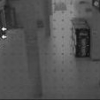Free Online Productivity Tools
i2Speak
i2Symbol
i2OCR
iTex2Img
iWeb2Print
iWeb2Shot
i2Type
iPdf2Split
iPdf2Merge
i2Bopomofo
i2Arabic
i2Style
i2Image
i2PDF
iLatex2Rtf
Sci2ools
WACV
2005
IEEE
2005
IEEE
Detecting Motion Patterns via Direction Maps with Application to Surveillance
To facilitate accurate and efficient detection of motion
patterns in video data, it is desirable to abstract from pixel
intensity values to representations that explicitly and compactly
capture movement across space and time. For example,
in the monitoring of surveillance video, it is useful to
capture movement, as potential targets of interest traverse
the scene in specific ways. Toward such ends, the “direction
map” is introduced: a novel representation that captures
the spatiotemporal distribution of direction of motion
across regions of interest in space and time. Methods are
presented for recovering direction maps from video, constructing
direction map templates to define target patterns
of interest and comparing predefined templates to newly acquired
video for pattern detection and localization. The approach
has been implemented with real-time considerations
and tested on over 6300 frames across seven surveillance
videos. Results show an overall recognition ra...
| Added | 12 Apr 2010 |
| Updated | 17 Apr 2010 |
| Type | Conference |
| Year | 2005 |
| Where | WACV |
| Authors | Jacob M. Gryn, Richard P. Wildes, John K. Tsotsos |
Comments (0)



